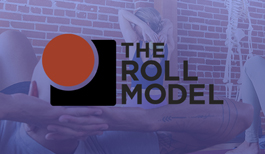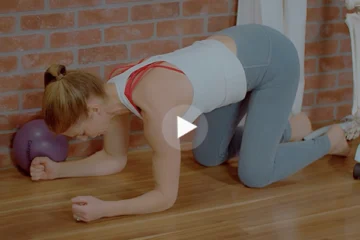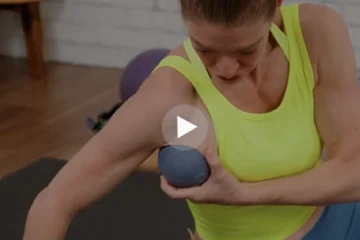
Having discussed the bony architecture, let’s look at the muscular support for your feet!
Fibularis Longus is a foot everter and helps plantar flex the ankle. It runs down the lateral side of the fibula from just below the knee. It’s long tendonous attachment snakes behind the lateral malleolus of the fibula, then underneath the cuboid to attach at the medial side of the mid-foot, at the base of the first metatarsal (big toe) and the bone right behind it closer to the ankle—the first cuneiform. While the Fibularis muscles as a rule support the lateral arch, the Longus’ lateral-to-medial track supports the transverse arch as well.

Fibularis Brevis, also an everter and plantar flexor, sits deep, medial and inferior to its longer counterpart, connecting the lower portion of the lateral fibula, passing behind the lateral malleolus to the base of the pinkie toe. It pulls the metatarsal back toward the cuboid, snuggling up the lateral arch.
Tibialis Anterior is an ankle inverter and dorsiflexor, connecting the lateral side tibia from below the knee, crossing the ankle on top of the foot at the retinaculum, to the medial cuneiform and base of the big toe, giving the weakest point in the medial arch significant support.
Tibialis Posterior, an inverter and plantar flexor, descends from the backside of the tibia and fibula below the knee, threads behind the medial malleolus, and fans across the navicular, all three cuneiforms and the bases of the 2nd – 4th toes. Given the number and locations of these connections, the Tibialis Posterior is critical to transverse as well as medial arch support.
These four muscles and the support they create in the arches of our feet allow us to walk easily on uneven terrain. Unfortunately, aside from the occasional vacation stroll on the beach, few of us cruise around barefoot, thus leaving these muscles underused, misused, and abused and our ankles inverting, everting and spraining.
If the Fibuaris Longus is tight and the Tibialis Anterior is overstretched, the foot everts (pronates). While we need some degree of pronation so all five toes land simultaneously in our footfall, excessive pronation often results in a collapsed medial arch (think plantar fasciitis and heel spurs). If the opposite occurs (overstretched Fibularis Longis and tight Tibialis Anterior), the foot supinates (inverts). Too much supination results in ankle sprains. No wonder you may suddenly find yourself a whimpering or wobbly Warrior.
Look at the heels of your shoes. If they slope toward each other, you are a pronator, if they slope away, you are a supinator. In either case, your arches could probably use a little maintenance. To stretch, strengthen and fortify your architecture from the ground up, check out the Yoga Tune Up® Quick Fix for Feet and Ankles. My favorite exercises include calf raises for strengthening (be sure you are lifting and lowering evenly), dandasana ankle circles and namaste feet for range of motion, and sitting seza (both versions) for deep stretching.
Discover our solutions for foot and ankle pain relief.
Watch our free 5 minute feet and ankle video.
Check out our Post athletic stretch DVD












Thank you Christine! I especially found the exercise suggestions helpful and the easy explanation of supination and pronation and the effect on the shoes is a quick reference.
I love how you suggested looking at the bottom of our shoes. I have a habit of looking at others shoes and informing them if the pronate or supinate. I’m sure it drives people crazy but learning this about myself has been a game changer for me.
This is a very anatomy rich post! Awesome! I actually always heard of people checking the heels of their shoes for wear and tear and I knew that it meant unstable arches when they weren’t wearing evenly but I did not think about the supination and pronation aspect of the puzzle!
thanks, love this pose
Thanks so much for this Christine. I’m teaching Trikonasana today and I was focused on the hips and shoulders. Outside of teaching Tadasana, I hadn’t considered attending to the feet and fibulas muscles. Taking our tootsies for granted, again. I’m going to revise my sequence now. Best!
Great blog! I enjoyed learning more about the connection of the fibularis longus and brevis and the tibialis anterior and posterior muscles attributing to smooth foot activation and balance. The assessment with looking at the soles of your shoes was awesome. Very helpful!! Thank you.
I really appreciate the visual attached to this very informative article. It’s easy to just say on the surface when looking at the alignment of the feet and not to consider, not only the muscles of feet, but also the muscles of the leg that are truly responsible for strengthening the ankles and providing accessible alignment down through the feet. It’s nice to have the yoga tune up balls now to help with rolling on the calf muscles. Accompanied with exercises for strengthening, such as the calf raises mentioned, I can now be more aware of how to take of these muscles that I use everyday in walking, standing, yoga, and dance. I also found that rolling out the feet greatly improved my foot and ankle alignment in just a manner of minutes. These small exercises are crucial in keeping my body and healthy and strong for years to come.
It’s very helpful to remember that so many of the muscles in the body are related. I tend to think of my feet as separate entities, as if they’re not even attached to my legs. I know that standing incorrectly and issues like pronation and supination can lead to poor alignment and other problems, but the idea that too much tension in the lower leg muscles can change the way your feet work (which can then lead to poor alignment and other issues) never occurred to me. Very interesting!
i had to laugh when you asked us to look at our shoes… i don’t have to- every pair of running/walking shoes i have ever wore has that outward slope on both shoes from chronic supination. Until recently I’ve just written if off as being my body angles and just my natural shape. But as I’ve been going through YTU level 1 TT I’m realizing that while we all do have different ways our joints connect and lengths of bones etc, a lot of the ways we hold our body are not serving us from a healthy body mechanics standpoint. I’m also becoming more aware that altho these habitual positions we hold ourselves in may not be outwardly causing us problems, over time they do affect our muscles w/ certain ones being chronically over stretched and others contracted which then affect the joints they attach to. Time to start leveling out my shoes!!!
Would the ideal situation in the foot be a completely even wear on your tennis shoes? I know there is some pronation when you walk to help propel you forward – but would the ideal foot still show pronation wear? If so, how will we ever know when we’ve done enough for our feet!? haha – Although, I suppose that we are all perpetual students of our bodies =) Thanks for your help!!
As someone who is extremely flatfooted I found this to be extremely interesting! Thanks for sharing!
It’s nice to see attention to the smaller yet equally important muscles of the lower leg and how they interact and react. i’ve found the sitting seza to be particularly useful in creating space in the foot and across the ankle.
Debbie,
Sitting Seza is a Yoga Tune Up exercise. Here’s a link to another blog which includes the video.
http://www.yogatuneup.com/blog/2011/08/26/yoga-tune-up®-stretch-for-leg-cramps/
I love this as a follow up to “Arch-itechture” what Is sitting seza ( both versions) that you referred to at the end of the article ?
thank you! great info and much appreciated!